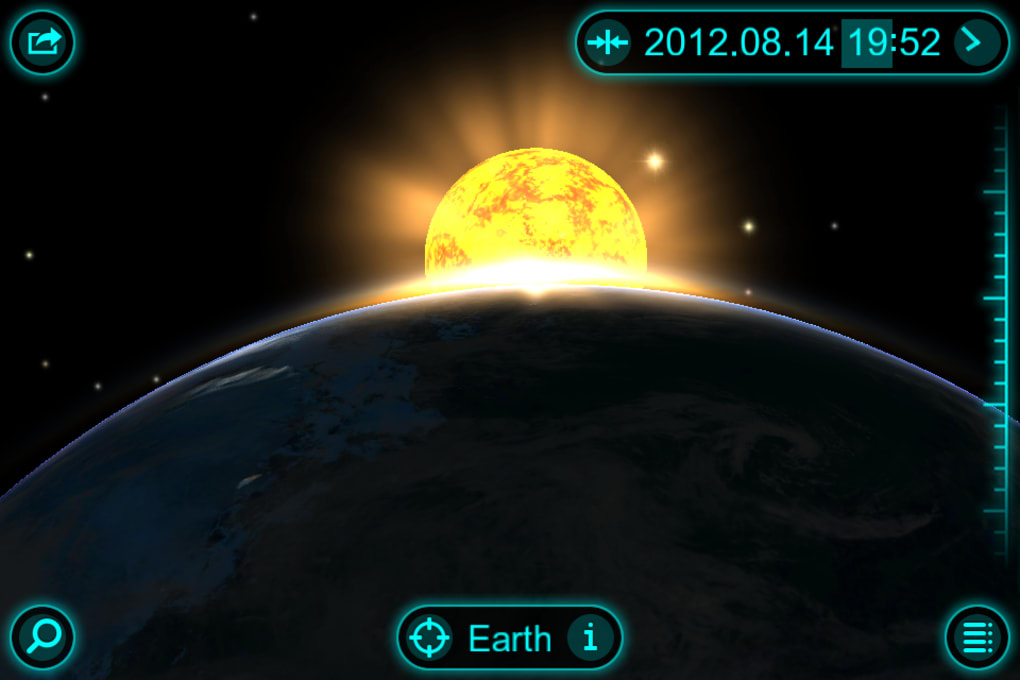


Note that because the planets orbit the sun along different paths at different speeds, the distance between them is constantly changing. Using Newton's Law of Universal Gravitation and the known masses and distances of the sun, the moon, and the planets, we can calculate the gravitational force that a 100 kg person feels from each astronomical body when he is located on earth's surface at the equator: Astronomical Body Let's put some numbers behind these claims. The word "spring" here refers to the fact that the water seems to leap up the shore with the extra strong tides every two weeks, and not that they occur only in the Spring season.
#SOLAR WALK PLANETS FULL#
This partial alignment occurs every full moon and new moon, and it leads to extra strong tides called " spring tides". The near alignment of the sun and the moon does have an effect on the earth, because their gravitational fields are so strong. The moon's gravity is primarily responsible for the daily ocean tides. The sun's gravity causes earth's yearly orbit and therefore, combined with earth's tilt, it causes the seasons. The moon's gravitational effect on the earth is strong because the moon is so close. The sun's gravity is strong because the sun is so massive. There are only two solar system objects with enough gravity to significantly affect earth: the moon and the sun. In truth, the gravitational pulls of the planets on the earth are so weak that they have no significant effect on earth life. Fictional and pseudo-science authors like to claim that a planetary alignment would mean that all of the gravitational fields of the planets add together to make something massive that interferes with life on earth. For this reason, surprisingly, it's actually rather rare for more than two planets to be near each other in the sky at the same time.Įven if the planets did all align in a perfectly straight line, it would have negligible effects on the earth. Sometimes a planet is a little above the plane, and sometimes a little below. They're all tilted a little, so that planets don't all fall exactly along a line in the sky. However, the planets' orbits don't all exist perfectly in the same plane. Alignment is therefore an artifact of a viewpoint and not something fundamental about the planets themselves.

If three planets are in the same region of sky from the earth's point of view, they are not necessarily in the same region of sky form the sun's point of view.

Baird.įurthermore, "planetary alignment" depends on your viewpoint. Public Domain Image, source: Christopher S. The type of planetary alignment shown in this artistic rendering never happens. And this type of "alignment" almost never happens to all the planets, but instead happens to two or three planets at one time. They just mean that some of the planets are in the same general region of the sky. When astronomers use words like "planetary alignment", they don't mean a literal lining up. It's like waiting for a swarm of flies circling your head to all line up. For this reason, they will never be perfectly aligned. Instead, they swing about on different orbits in three dimensional space. In reality, the planets do not all orbit perfectly in the same plane. If you look at a two-dimensional plot of the planets and their orbits on a piece of paper you may be lead to believe that all the planets will circle around to the same line eventually. The planets in our solar system never line up in one perfectly straight line like they show in the movies. When do the planets in our solar system all line up?Ĭategory: Space Published: August 28, 2013


 0 kommentar(er)
0 kommentar(er)
